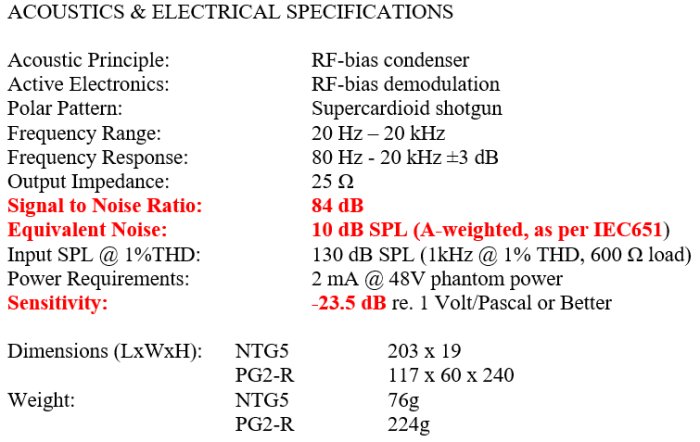
 |
Originally I used a Rode NT1 as my wide-field mic but my intensive use in a humid Gulf Coast location fairly quickly rendered that mic unusable. Sennheiser makes an excellent RF-biased omni mic, MKH 8020 that is both sensitive (-30 dB) and low noise (-10 dB). This would be a great solution but the pricetag at $1400 is beyond what I wish to budget. The Rode NTG5 is an RF-biased short gun mic that is also robust in humid environments. It pattern is rather narrower than I care to have but it is the only current solution short of breaking the bank with the above Sennheiser.
It remains my intention to have the Rode cover the space above, behind, and to the sides of the highly directional dish, zones otherwise "rejected". Having constructed polar plots scaled to relative sensitives when comparing directional microphones, I am struck by the incredible sensitivity of the Wildtronics dish at all polar angles, especially when compared to most other microphones. This should remind the reader that "Directional" in microphones is defined as a ratio between the sensitivity at zero polar angle to that at some large angle, say at 60 or 90 degrees. It is NOT NECESSARILY "off axis rejection" although it is often presented as such.
The following plot shows the Wildtronics polar response for 1000 and 3150 Hz (warm colors) along with the Rode NTG5 response at 1000 and 4000 Hz (cool colors). All curves are plotted with sensitivities relative to each other. On the chart I have rotated the NTG5 120 degrees off the dish zero axis. This reflects my actual setup where the angle between the two microphone zero axes is about 120 degrees. Think of the chart as representing a vertical cut with the NTG5 directed up and behind the dish. Note that the Wildtronics data appears “puffed out” due to the scale chosen in this plot. I assure you the data is unchanged and the plot correctly shows the relative amplitudes of the original.

The first and immediate impression is just how much lower the Rode NTG5 sensitivity (blue curves) is with respect to the Wildtronics dish (red curves) with its "free gain". My angst about missing the off-axis rarities was possibly misplaced! Still the NTG5 should do a good job sweeping up sounds from above and behind the dish at least. Zones to the sides remain uncovered for the time being, maybe Rode will come out with an RF mic to compete with the MKH 8020 one day. Who knows?
KJS 04/2025